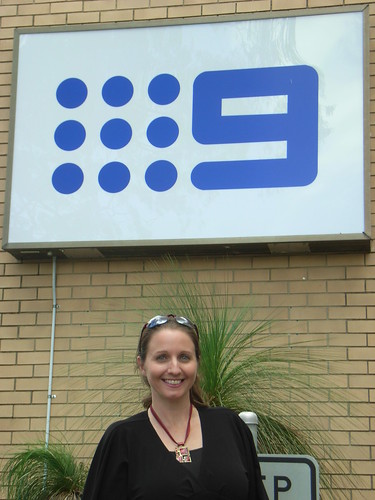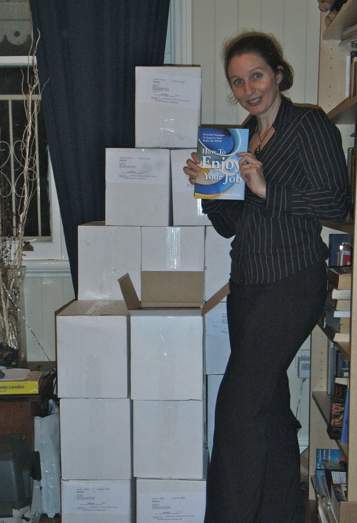 In today’s Publetariat Dispatch, author and publishing consultant Joanna Penn offers a list of common self-publisher mistakes and how to ensure they don’t happen to you.
In today’s Publetariat Dispatch, author and publishing consultant Joanna Penn offers a list of common self-publisher mistakes and how to ensure they don’t happen to you.
To be an independent author means taking your book project seriously. But most of us haven’t been in publishing for our whole careers, so it’s inevitable that we make mistakes along the way.
Mistakes aren’t bad either. They are the human way to improve and learn. But it helps if we can help each other!
I’m not perfect and I continue to learn along the writer’s journey but here are the worst mistakes I have made and seen others doing too. I’d love to hear from you in the comments about your mistakes as by sharing, we can all improve together.
(1) Not spending enough time learning about you, your book and your audience
You need to get to know yourself, as well as understand the goals for your book and the needs and expectations of your audience. If you don’t understand your goals, how will you know what path to follow and whether you are successful or not?
For example,
* Know yourself. If your dream is to have your book in every physical bookstore and airport, then you should be looking at traditional publishing. If you just want to reach readers, go ebook only with a low price or free. If you want to make income, make sure you have other products behind the book.
* Know your book and your genre. If you are writing historical romance, you should be reading that type of book and understanding what the audience look for and then making sure your book fits the niche – or look for another niche
* Know yourself. Are you in this for the long haul or is this one book everything to you?
There are lots more questions to ask yourself. The key is to spend time reflecting and writing around these topics which will really help shape your publishing decisions.
(2) Not getting a professional editor
The #1 criticism of self-published books is that they are not professional enough and I believe quality is in direct proportion to the amount of editing you have. Seriously.
I really think that every writer needs an editor.
If you get a pro editor, and take their advice, your book will improve beyond anything you could imagine. I’ll go further and say you need 2 editors – a developmental one for the structure of the book, and a copy-editor for the line detail and cleanup. Pentecost went through 3 editors in the end and I have just engaged a fourth to help me improve my writing further.
(3) Not getting professional design
As above, we want our books to stand alongside traditionally published books and have the same level of quality. Unless you are already a designer specializing in books, then I recommend you hire someone. Check out Joel at The Book Designer or Derek Murphy’s CreativIndie book covers here.
If you really want to DIY, then read everything on TheBookDesigner.com including the Ebook Cover Design Awards so you can understand what works. You can also check out Ant Puttee at BookCoverCafe.com.
After evaluating my sales numbers and deciding that I don’t want an amateur product, I have decided to pursue ebook only for my books going forward. Your book publishing choice is up to you, but just make sure it is professional.
(4) Doing a print run without having a distribution deal
This was one of my big mistakes and I still hear of people doing it. Consider carefully whether you really want to publish a print book. If you do, brilliant. For the best result, hire a book designer and go with print on demand as the first option. You can order a few copies at cost to give to people.
<— Me in 2008 with way too many print books
But do you need to do a print run locally and have thousands of books delivered to your door?
This is important as you will have to pay in advance for the printing. You’ll also have to store them and ship them if you sell from your website.
Yes, it works out cheaper per book if you sell them all but are you going to sell them all? Do you have a distribution channel in place? e.g. a speaking platform or a guaranteed bookstore?
See the picture on the right? That’s me in 2008 with way too many books that I didn’t sell, before I discovered print on demand. They mostly ended up the landfill. Don’t make this mistake.
Also, check out this infographic for some great comparisons of offset vs print on demand.
(5) Paying way too much for services you can do yourself with a little education
I still get emails from people who have paid $10,000 for an author services package and received 100 books as well as losing the rights. Or people who have paid $5000 for their author website without knowing how to update it themselves.
I know most authors aren’t that interested in technology, but it is worth a little short term pain to empower yourself with some knowledge and save yourself a lot of money in the process. For example, if you just have a plain text novel, pay $49 for Scrivener and do it yourself. Then you can change the files whenever you like.
It’s fine to pay professionals for a service but make sure you know: a) why you need it b) how things will work in the future e.g. changing things, which is 100% likely to happen c) what your alternatives are
(Obviously I don’t mean you should scrimp on editing or cover design but shop around and get the best deal for you and the right person for the job!)
(6) Doing no marketing at all, or getting shiny object syndrome

When I launched my first book, I only knew about offline marketing and mainstream media. I made it onto Australian national TV and radio and still sold no books. That’s when I decided to learn about online marketing. Life has been a lot better since!
Many authors think marketing involves bookmarks or book signings but these are probably the least effective forms of marketing.
Other people get into blogging, then Twitter, then Pinterest, Facebook, podcasting, video etc all in the same week and then burn out with exhaustion and decide that marketing doesn’t work. This is shiny object syndrome – jumping onto the newest, latest thing without giving the last thing a chance to work.
Me at Channel 9, Australia———————————->
My advice here is to give something a try for 6 months of concerted effort before you expand. I started with a year of blogging, then moved into Twitter and podcasting, later I went with Facebook and video. These are my core marketing and platform building activities but they all took time to build.
Find what you enjoy and stick at it.
(7) Focusing everything into one book
This is something I have only learned recently, and perhaps we can’t learn this except through our own experience.
When Pentecost came out, I was entirely focused on marketing it and making my new fiction career work. I heard the pros say you need more than one book but I was sure I could make it successful. It has now sold over 30,000 copies which is a modest success but more importantly, the sales figures have increased again with the launch of Prophecy. I can expect the same pattern on the release of future books too as new readers find me through the increased “shelf space”.
I am also understanding the long haul career of a pro-writer involves always working on the next book. Celebrating the last, but getting on with the next. This is our passion, but also our job. Obsessing over one book isn’t as important as getting on with the next.
I’d love to hear your comments. Do you agree with these mistakes and what else can you add?
This is a reprint from Joanna Penn‘s The Creative Penn.
